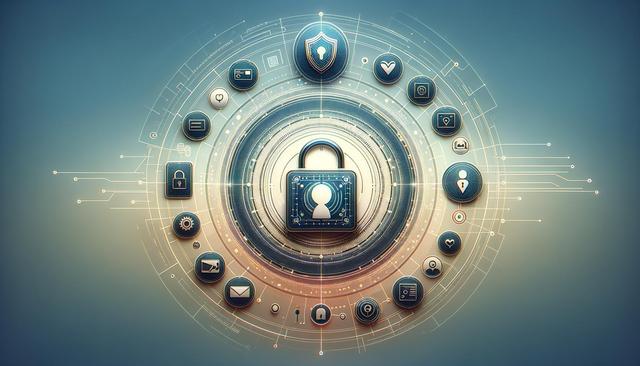Understanding the Modern Threat Landscape
In 2025, cyber threats are becoming more sophisticated, targeting individuals through a combination of social engineering, artificial intelligence, and data breaches. Identity theft is no longer limited to stolen credit card numbers. Today, criminals exploit everything from social media profiles to biometric data. Understanding these threats is the first step toward protecting yourself. Cybercriminals often use phishing emails, fake websites, and even voice cloning to deceive users into revealing sensitive information.
Many of these attacks are designed to seem legitimate, making vigilance critical. For example, deepfake technology is now being used to impersonate trusted individuals, increasing the risk of falling victim to scams. Recognizing these developments is essential to staying ahead. Key vulnerabilities in 2025 include:
- Unauthorized access to cloud storage and online accounts
- Weak or reused passwords across platforms
- Public Wi-Fi use without encryption
- Oversharing personal information on social media
By staying informed about these emerging risks, you can begin to develop a proactive approach to securing your identity.
Strengthening Your Digital Footprint
Strengthening your digital footprint involves more than just creating strong passwords. In 2025, it’s about building multiple layers of security around your personal data. Start by using a reputable password manager to generate and store complex passwords. Enable two-factor authentication (2FA) on all important accounts, including email, banking, and social media platforms.
Additionally, review your privacy settings regularly. Many online services update their privacy policies and settings, sometimes making your information more visible by default. Take time to:
- Limit the amount of data shared with apps and platforms
- Turn off location tracking when not needed
- Restrict who can view your social media profiles
- Review app permissions on your devices
By managing these settings proactively, you reduce the amount of personal information available to potential thieves. Also, be cautious about using services that require extensive personal details unless absolutely necessary. The more data you share, the greater your exposure in the event of a breach.
Monitoring Your Identity and Activity
Monitoring your identity is crucial for catching potential issues early. In 2025, automated tools and services are available that alert you to suspicious activity, such as new account openings or credit inquiries. Consider subscribing to an identity monitoring service that provides real-time alerts, dark web scans, and financial account monitoring.
In addition to automated tools, you should also perform regular manual checks. These include:
- Reviewing credit reports from all major bureaus at least once a year
- Checking bank and credit card statements for unauthorized transactions
- Monitoring your email for unfamiliar login attempts or security alerts
Be aware of phishing attempts that often appear as legitimate messages from financial institutions or tech companies. Never click on suspicious links or attachments, and avoid sharing personal information over email or phone unless you initiated the contact.
Protecting Your Devices and Connections
Your devices are the gateway to your personal information, making them a top target for cybercriminals. In 2025, it’s essential to keep all your devices—smartphones, laptops, smart home systems—up-to-date with the latest security patches and software updates. Using outdated software can leave you vulnerable to known exploits.
Securing your internet connection is equally important. Use a trusted VPN when accessing public Wi-Fi, and avoid conducting sensitive transactions while connected to unsecured networks. Additional steps you can take include:
- Installing reputable antivirus and anti-malware software
- Enabling firewalls on all devices
- Disabling Bluetooth and location services when not in use
- Encrypting sensitive files stored on your devices
Educating yourself and your household on these practices can make a big difference. Children and elderly family members are often targets of identity scams, so ensure they are aware of basic cybersecurity principles.
Preparing for the Unexpected
Even with the best precautions, breaches can still happen. In 2025, being prepared to respond quickly can minimize the damage. Keep a checklist of steps to take if your identity is compromised. This includes contacting your bank, freezing your credit, and reporting the incident to the appropriate authorities.
Having a recovery plan in place can help reduce stress and ensure you act swiftly. Some key preparedness tips include:
- Keeping a record of all your accounts and their associated contact information
- Storing copies of important documents in a secure, offline location
- Knowing how to contact your local credit bureaus and fraud reporting agencies
- Using identity theft insurance if available
Additionally, consider educating yourself on your rights under current identity protection laws. Knowing what support and resources are available can make the recovery process smoother. The key is to act quickly—delays can lead to further financial or reputational harm.
Conclusion: Staying Vigilant in a Digital World
Protecting your identity in 2025 requires consistent effort and awareness. By understanding modern threats, strengthening your digital habits, monitoring your activity, securing your devices, and preparing for incidents, you can significantly reduce your risk. While no system is foolproof, these steps can help you stay one step ahead in an increasingly connected world. Make cybersecurity a regular part of your routine, and encourage those around you to do the same.


